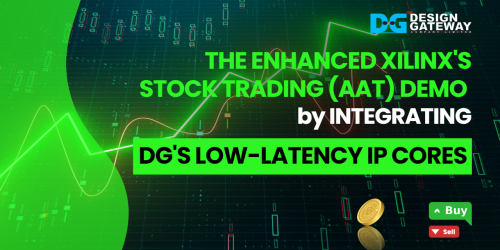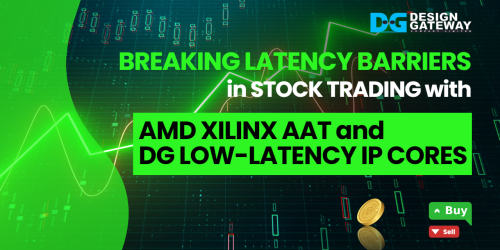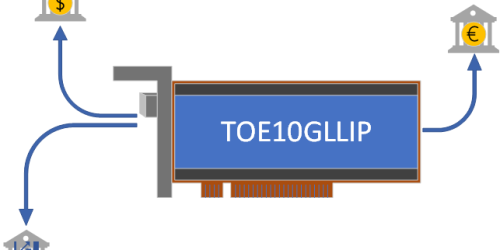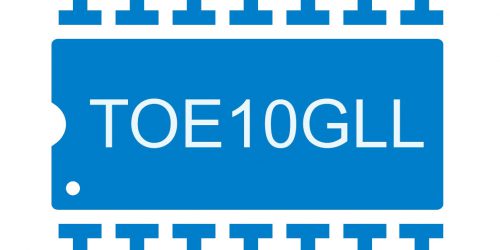DG’s Super Low-Latency EMAC

What is EMAC?
EMAC is stand for Ethernet Media Access Control defined by IEEE-802.3 Ethernet standard. It implements a data-link layer in OSI model. The speed is managed by MII (Media Independent Interface) as defined by IEEE-802.3. It is sub-module include in EMAC. EMAC supports several of speed such as 100 Mbps up to 100 Gbps depends on MII’s configuration and specification of chip. For example, 1 Gigabit EMAC is called “GEMAC” and 10 Gigabit EMAC is called “XGEMAC”. Simply said, just put the speed as a prefix and follow by EMAC.
Normally, EMAC is sit between TCP/UDP stack and PCS/PMA. Its job is to pass information not only the data packet but also some controller signals from PCS/PMA to inform the upper level block, in this case, which is TCP/UDP stack. Furthermore, it also calculates FCS (Frame Check Sequence), which inside is CRC, every packet. There are two purposes to calculate CRC. The first one is to meet the standard. As our packet might go to an internal or external network, we have to ensure that our pack will be able to pass other network equipment and reach the destination. Secondly, it detects some bad packets to prevent wrong data and reduces the load in the upper level due to processing wrong packets.

What is a Low-Latency EMAC?
The majority duty of a Low-Latency EMAC is quite similar to the EMAC from above. However, there are slightly different in detail. The difference is the latency time when processing packet from TCP/UDP stack to physical layer or in counter direction will be shorter than normal EMAC. Another example is a speed. Normally, when talking about Low-Latency in this year, people will automatically know that the topic is involving either 10 Gigabit Ethernet or 25 Gigabit Ethernet. Because, there are Low-Latency EMAC on 10 Gigabit Ethernet and 25 Gigabit Ethernet. Meanwhile, EMAC is a general block which most hardware applications involving network needed.
Compare IP
There are many IP-Providers who have 10 Gigabit Ethernet MAC (10GEMAC). However, we will compare our IP with two main FPGA’s manufacturers, which are Xilinx and Intel, in a few topics. The reason behind choosing those companies to compare with is partnership. Design Gateway has joined Xilinx Certified Alliance Partner and also Intel DSN Platinum Partner for a long time. The environment for Xilinx afterward will be Kintex-Ultrascale at 156.25 MHz and the environment for Intel will be Arria10GX at 156.25 MHz. The IP-core from Design Gateway to compare with Xilinx is DG-10G25GEMAC-IP and to compare with Intel is DG-10GEMAC-IP.


The two roughly diagrams of connecting EMAC to User logic and lower level are shown above by on the above is Xilinx diagram and on the lower is Intel diagram. EMAC is located in the middle between User logic, in the red block, and lower level, the blue block.
Feature
The basic function of EMAC, which is passing data between TCP/UDP stack and PCS/PMA, is the same. However, an IP-core from Design-Gateway will get rid of some features, such as IEEE 1588.
Size
As mentioned above, when getting rid of some features, the result is a small size of our Low-Latency EMAC by comparing with those two manufacturers. First, we will compare with Xilinx. Design Gateway’s IP-Core is just a halve size of Xilinx.

The table below is the comparison result between Design Gateway and Intel. Our IP consumes ALMs slightly less than Intel a bits. Then, Intel’s register is being used more than double of Design Gateway. The last one is Block Memory. Design Gateway utilizes none Block Memory meanwhile Intel does.

Latency
We cannot ignore this topic as we are focusing on latency. Therefore, we will compare our IP-Core with the manufacturer, again. From the table below, we will compare our IP-core with Xilinx. The result is as good as Xilinx on transmitting path. How about receiving path, our IP-core can do a little bit better than Xilinx, just faster than two times.

Next, we will compare with Intel. From the table below, our IP-core can perform a fascinating result specially in transmitting path. It is faster than Intel three times. However, the receiving path is faster than Intel just two times.

Price
As a result of the properties above, when features are reduced. Then, you will get the resource back for your project. Next, the latency which is the most important key features is alternative solutions for the application that requires low latency as much as possible. Therefore, it reflects to our price. We cannot show the exactly number but we would say it is competitive and reasonable.
Conclusion
The role of EMAC in hardware application is a middle man between TCP/UDP stack and lower layer. It supports a numerous speed due to configuration and the specification of microchip. It also includes some interesting feature such as Low-Latency. Design Gateway, as an IP-core provider, has built an excellent EMAC with or without Low-Latency feature for varied speed. We also provide TCP/UDP stack to combine with EMAC to become a network solution for your project. Feels free to visit us via https://dgway.com/index_E.html






